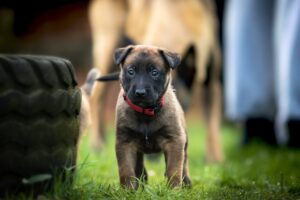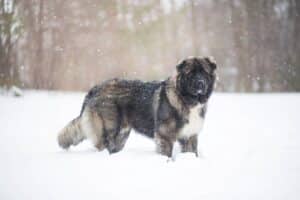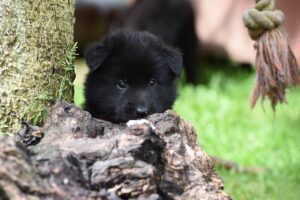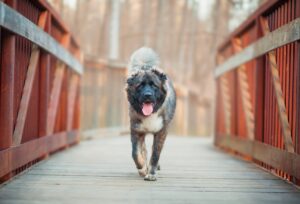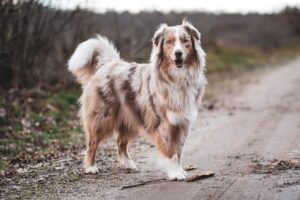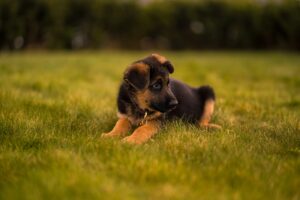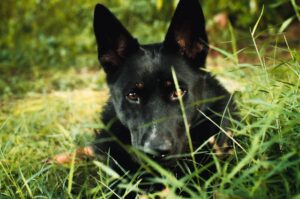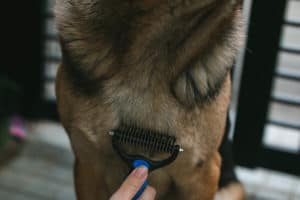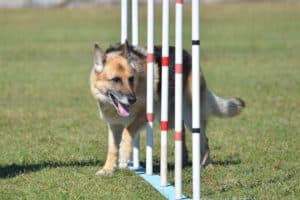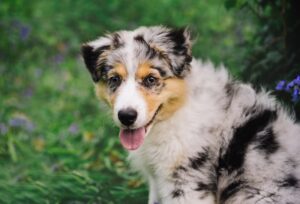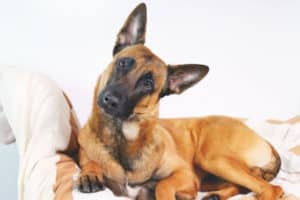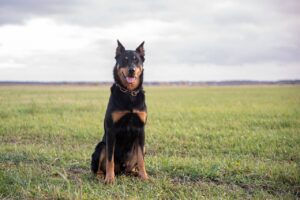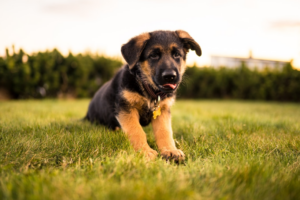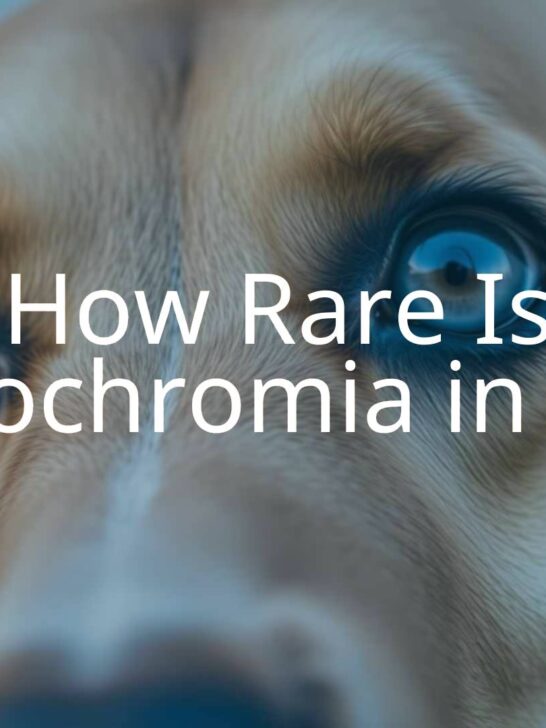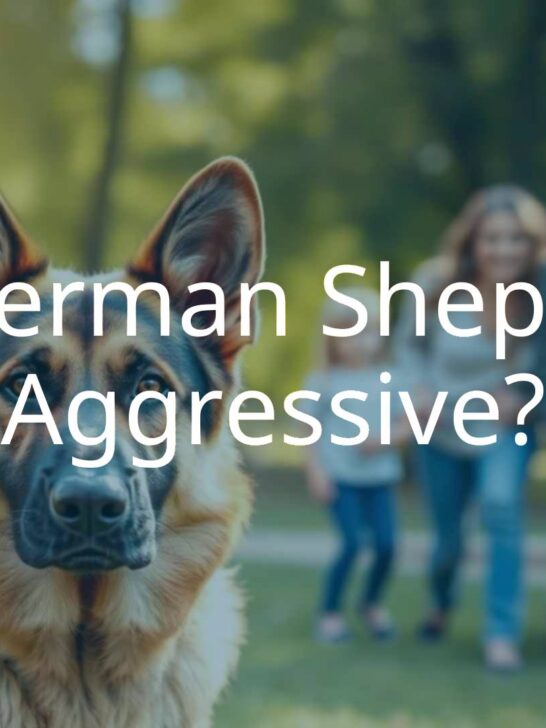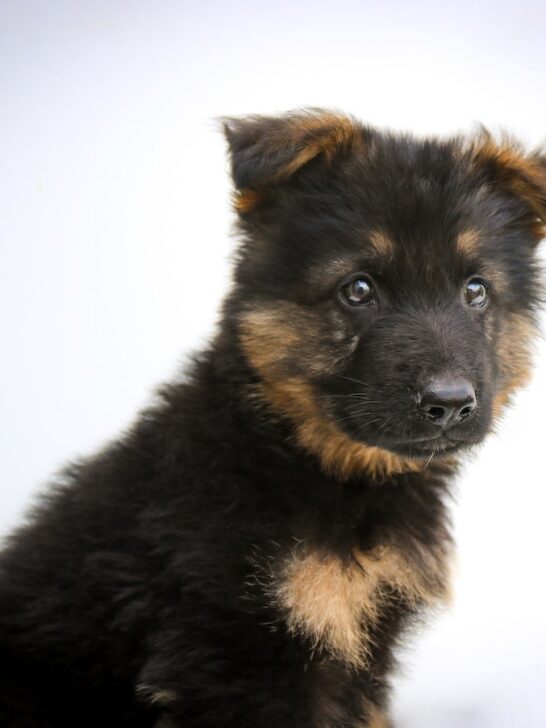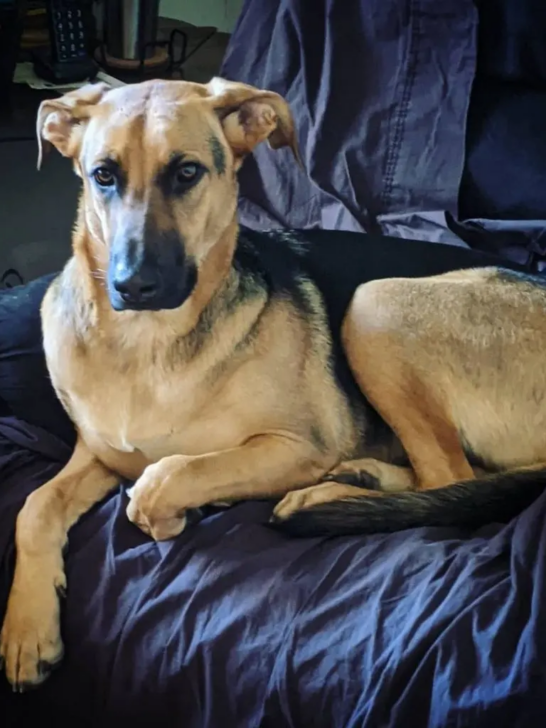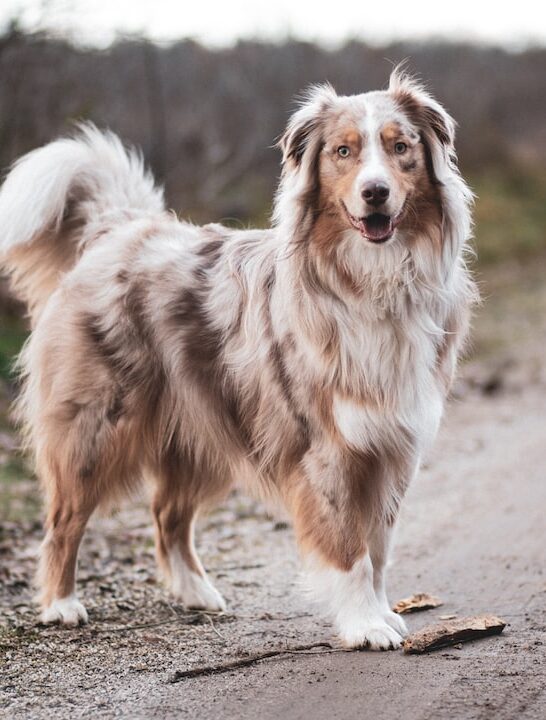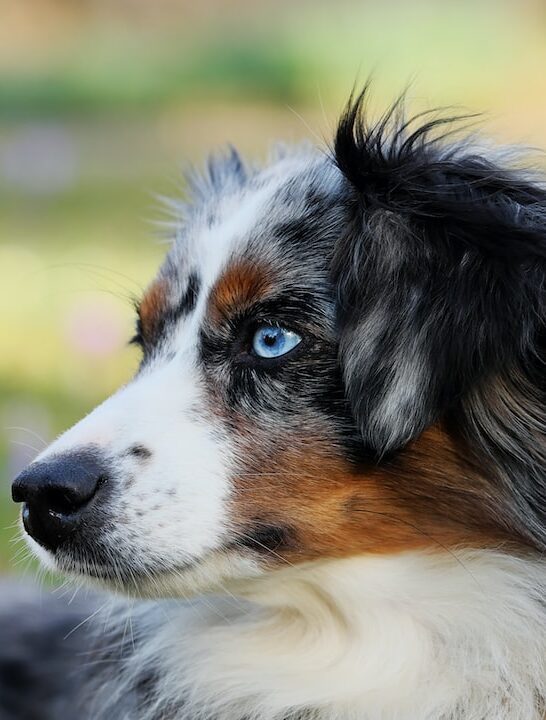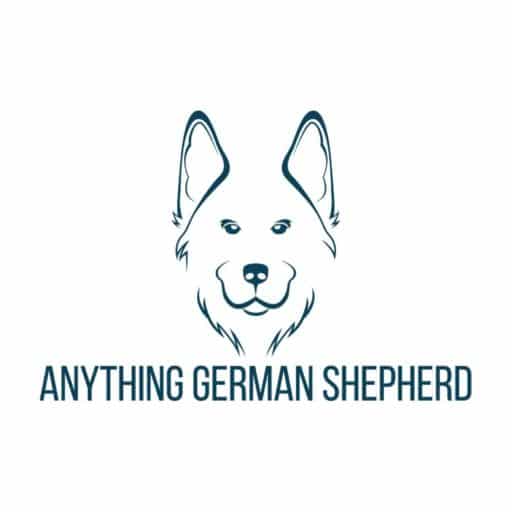German Shepherd Husky Mix: Temperament & Characteristics
The German Shepherd Husky Mix is a hybrid breed with German Shepherd and Siberian Husky parents. It originated in the late 1990s. However, both of its parent species existed for ages.
- German Shepherds are affectionate family dogs that love socializing with others. They need a lot of human companionship and are good with children.
- Huskies, often used as sled dogs, are a hard-working breed that thrives in cold climates. These dogs need lots of exercise and mental stimulation.
The German Shepherd Husky Mix is a designer breed that combines these two large breeds into one exceptional dog.
Also called the Gerberian Shepsky, German Husky, Shepsky, or Siberian Shepherd, these dogs are loyal, friendly, and protective.
If you think about getting a German Shepherd Husky pup, we’ve got all the information you need.
Read our guide to learn how to take care of this energetic dog!
Breed Characteristics
While Siberian Husky is a medium-sized dog, many Shepsky puppies take after their German Shepherd parent in terms of height and weight. Therefore, the German Shepherd Husky Mix is a relatively large dog.
Usually, adult dogs from this breed grow up to around 20 to 26 inches in height and weigh approximately 45 to 88 pounds.
Still, these dogs are graceful, extraordinarily speedy, and athletic.
| Details | |
|---|---|
| Temperament | great work ethic high energy levels intense playful but can be loud high prey drive |
| Coat | heavy shedders main colors: brown, black, cream, white, red, blue insulates well to adapt to cold weather |
| Training | very trainable highly intelligent needs a highly active owner who can provide the required exercise & playtime |
| Health | Lifespan: 10-14 years F1 breeds are typically healthier, but this mix is generally healthy |
| Suitability For Families | very affectionate with family kid-friendly relatively friendly around strangers & other dogs |
| Size | Weight: 45-88 lbs. Height: 20-26 inches tall |
| Price | $350-$850 |
Shepskies are compactly built with medium to short thick fur and a brushtail carried over the back. Their heads are medium with a moderately square muzzle and a slightly round face.
The breed has distinct brown, amber, blue, or green eyes with probable heterochromia.
The ears of these dogs are firmly erect, extending in front of the cheek line. They are more triangular and smaller than an average German Shepherd.
Husky German Shepherd Mix Temperament & Trainability
Shepskies tend to be highly vocal, especially younger pups. They may bark or howl and need lots of training to learn good manners. Don’t be surprised if your puppy is digging holes in your yard, chewing on furniture, and howling at night.
With a high prey drive, these mixed-breed dogs are effective watchdogs. They have unmatched energy levels, making dog parks and other open spaces their favorite playgrounds.
Here are a few qualities that can be generally expected as part of a Shepsky’s temperament:
- Affection and loyalty
- High prey drive
- Friendliness
- Playfulness
- High intensity
- The tendency to be vocal
- Stubborn and dominant personality
Before adopting a Shepsky puppy, make sure your new family member will be able to get enough exercise. They will also require lots of love and proper socialization to grow into a well-behaved dog.
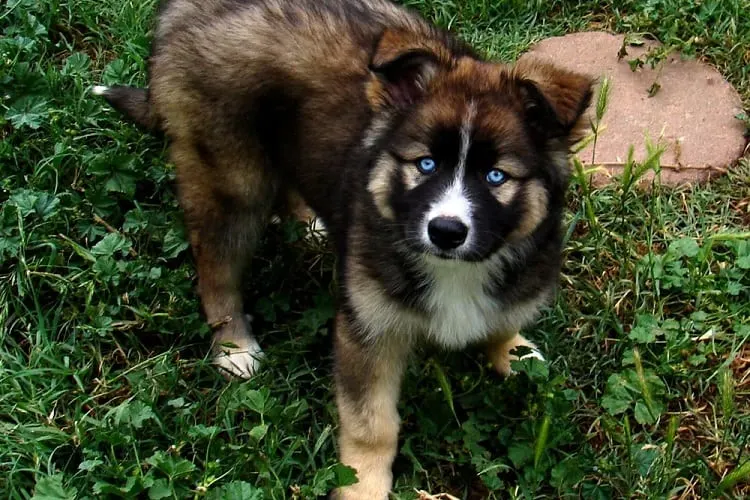
German Shepherd and Husky Mix Appearance
As mentioned above, your Gerberian Shepsky will be somewhat smaller than a German Shepherd. Most likely, it will stand 20 to 25 inches tall and weigh 45 to 88 pounds.
Expect your dog to have a compact build with medium or short thick fur.
The head will be medium, with a moderately square muzzle and a slightly round face.
Most German Shepherd Husky Mixes shed twice a year. Their outer coats are water and wind-resistant, while the underfur is insulating, so they are well adapted to hot and cold weather.
Although you should brush your dog twice a week, it is all the more necessary during their shedding time.
German Shepherd and Husky Mix Color
Most German Huskies have a sable or red coat with a dramatic facial pattern like forehead designs or spectacles.
Other possible colors for Shepsky coats include:
- Black and tan
- Black
- Brown
- White
- Blue
- Cream
How Long Will My German Shepherd Husky Mix Live?
Your Gerberian Shepsky will likely live from 10 to 13 years.
Nevertheless, it’s only a general estimate. You should fulfill your dog’s exercise needs and feed it a suitable diet to keep it healthy. Look for the best large breed dry dog food to ensure your dog will always be full of energy.
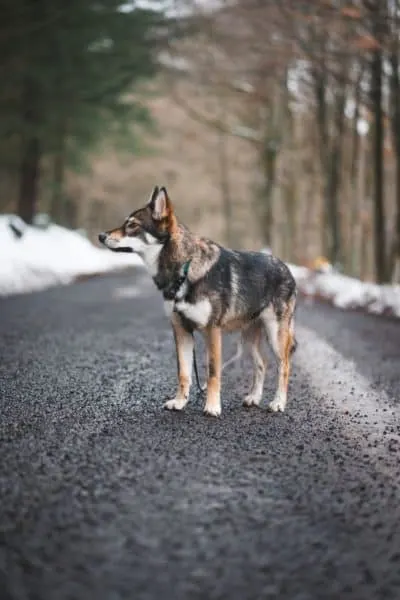
Potential Health Conditions of This Dog Breed
Since the parent breeds of Shepsky are a German Shepherd and a Siberian Husky, it often suffers from health issues that commonly affect those large dog breeds.
Dog lovers who want to adopt a puppy of this breed should look out for the following issues:
Elbow and Hip Dysplasia
The German Shepherd has a rather high incidence of joint dysplasia, while Siberian Huskies have an extremely low occurrence. Hip dysplasia occurred in about 2% of Huskies in 2019 compared to just under 20% for the GSD.
It means your German Shepherd Husky Mix puppy will show improvement in joint health over purebred German Shepherds.
Eye Problems
Your Shepsky could potentially inherit a few eye problems — mainly from the Siberian Husky.
- Juvenile cataracts: cataracts that develop in the first five or six months of age and can lead to permanent blindness by one year of age
- Corneal dystrophy: several conditions that occur in dogs and cause the corneas to become cloudy
- Progressive retinal atrophy: an inherited eye disease that leads to blindness in dogs
- Glaucoma: a disease of the eye that increases the pressure within the eye, called intraocular pressure (IOP). Over time, high IOP can damage the optic nerve and result in blindness.
Degenerative Myelopathy
Degenerative myelopathy (also known as DM) is a serious inherited disease. It affects the spinal cord in dogs, causing it to slowly deteriorate over time.
Unfortunately, dogs usually don’t show symptoms until they are at least eight years old.
The initial indicators include:
- having trouble rising from a seated position
- signs of weakness in their back legs
- lack of coordination in their movement
The progression of DM often starts subtly with one of the dog’s back legs. Over time, the other leg also gets affected.
Another striking symptom may be muscle loss. It can become apparent due to the visible thinning of the affected limbs.
Look out for abrasions on top of your dog’s paws or worn-out nails on the back legs. These injuries occur because the dog drags their feet along the ground, resulting from a decreased sense of feeling in their limbs.
Despite advancements in veterinary medicine, there is no definitive cure for degenerative myelopathy at present.
However, don’t lose heart! There are management strategies that can slow down the illness’ advancement and improve your furry friend’s quality of life.
Staying aware of early signs and seasonal checkups will definitely come a long way in managing this condition.
Grooming a Shepsky
Whether you are a first-time dog owner or a professional dog breeder, taking care of your Shepsky puppy might be more tricky than you expected.
Here are a few general guidelines to keep your dog happy:
- Make sure to trim the mix’s nails every six to eight weeks to prevent cracking, splitting, and fracturing.
- With proper consultation from a veterinarian, you can bathe your dog using mild and moisturizing cleansers. Avoid using a strong shampoo to maintain their fur’s natural oils.
- You should consult professionals for oral hygiene to protect your pup from bad breath, tartar, and mouth bacteria buildups.
- A healthy and active German Shepherd and Husky Mix should consume 1700 to 2400 calories per day. To avoid bloating, feed them twice or thrice a day with smaller portions.
- These dogs need at least two hours of exercise every day, including mental activities and high-intensity exertion. They should be engaged in strenuous exercises and intellectual stimulation for increased agility.
Is This Mix Part Wolf?
Dog DNA is only separated from wolf DNA by less than 2%. So, you might say dogs are 99% wolf.
Whether or not a dog will show unpredictable wolf-like temperaments will depend on recent mating patterns of purebred dogs with wolves or wolf hybrids.
It is commonly believed that German Shepherds and Huskies are more closely related to wolves than other breeds — most likely due to their appearance.
Shepherds and Huskies playing the roles of wolves on TV also play into this.
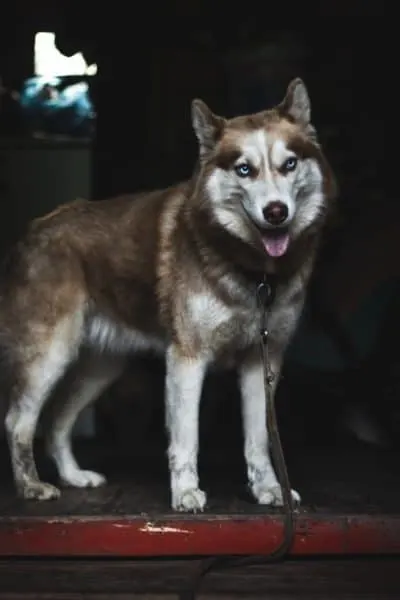
The original German Studbook of the GSD specifies four wolf crosses that occurred during a particular time frame marked by 30 dogs.
No DNA proof exists that wolf crosses were part of any regular breeding practice beyond the 76th German Shepherd.
This is not to say that people haven’t tried.
One such experiment was the Czechoslovakian Wolf Dog — a cross of Czech working German Shepherds and Carpathian wolves.
These wolf hybrids were largely abandoned for working purposes because of their high-strung temperaments and resistance to training.
Enthusiasts pursued the creation of a new breed instead, with better working skills.
Are Shepskies Good Watchdogs?
Since its parents are working dogs, your Shepsky will easily fit into a similar role.
Not only do Shepskies bark to warn you of trespassers or suspicious activity, but they also have the size and intimidation to deter most intruders.
Depending on your dog’s genetic makeup, there is a good chance your Shepsky will be an effective guard dog. With proper obedience training, these dogs even join search and rescue missions, helping others in need.
That said, Shepskies are not as protective or territorial as the GSD. This factor often makes them more manageable for easy-going families living in typical urban neighborhoods.
Can a German Shepherd Husky Mix Live in an Apartment?
Generally speaking, these dogs aren’t suitable for apartment living due to their large size.
More challenging than space, however, is your dog’s energy level. Shepskies require a lot of exercise.
Even if you successfully adapt your canine companion to a city dwelling, will your community be welcoming?
Many property owners and insurance underwriters view Siberian Huskies as destructive and aggressive.
Also, many people fear Huskies, viewing them as threatening to cats, small dogs, and children.
Potential restrictions on where you can live with your Shepsky will always be present and usually don’t distinguish between mixed breeds and purebreds.
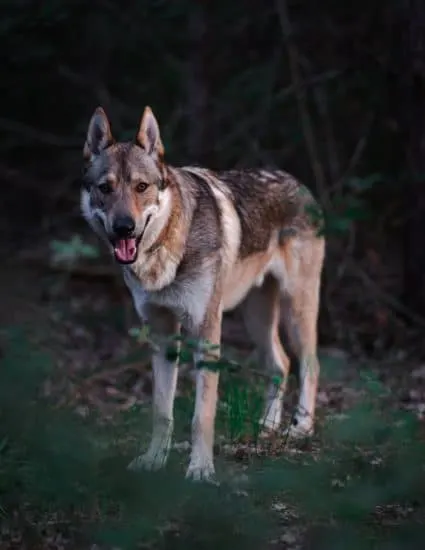
How Much Exercise Should My Husky German Shepherd Mix Get?
Your GSD Husky Mix will need at least an hour and a half to two hours of exercise every day.
As with any athletic dog, they will need a balanced program that includes portions of time dedicated to mental activities and high-intensity training.
You may wonder how you will find enough time to exercise your German Shepherd Siberian Husky Mix sufficiently. The great thing about having such a versatile dog is the number of activities that can be performed together, especially if you are an active person.
Many activities serve the dual purpose of strenuous exercise and intellectual stimulation:
- Agility training
- Herding trials
- Sledding
- Shutzhunde
- Fly ball
- Luring
- Police work
How Should I Feed My Gerberian Shepsky?
Due to bloating concerns, it’s best to feed your Shepsky two times a day. Three times daily is even better and can help avoid eating too much in one sitting.
A healthy and active GSD Husky Mix should eat 1700 to 2400 calories per day.
Using caloric measurements as feeding guidelines is more precise than going by volume, but it works out to approximately four to eight cups per day.
A more sedentary dog may need a caloric intake as low as 1200 kilocalories. You will have to use measurements as rough guidelines and go by your Shepsky’s appearance.
The ribs should not be visible, but you should be able to easily feel them under a light padding of fat when you run your fingers across your dog’s trunk.
From the side, your dog’s tummy should “tuck up.” The abdomen should be gradually sloping as it approaches the hind legs.
Puppies, since they are growing rapidly, require more vigilant weight-watching than adults.
You can adjust food amounts by 10% in either direction to account for excess loss or gain.
Will My Shepsky Get Along With Children & Other Dogs?
Your GSD Husky Mix could inherit some aggression from the German Shepherd. Still, most well-socialized Shepskies will get along with other dogs.
Siberian Huskies typically do not show aggression against fellow canids. Tiny dogs could pose a problem if your pet perceives them as prey.
Also highly dependent on extensive socialization, your Shepsky should get along with children. The hybrid’s playful personality makes them great companions for children over the age of eight or nine years old.
As with any larger dog, small children are at risk of injury from the exuberant nature of the Shepsky. Your furry friend could run over a toddler or may exhibit nipping and herding tendencies.
Keep in mind that mixed breeds are responsible for a large proportion of serious dog bites, and the most common victims are children under nine years old.
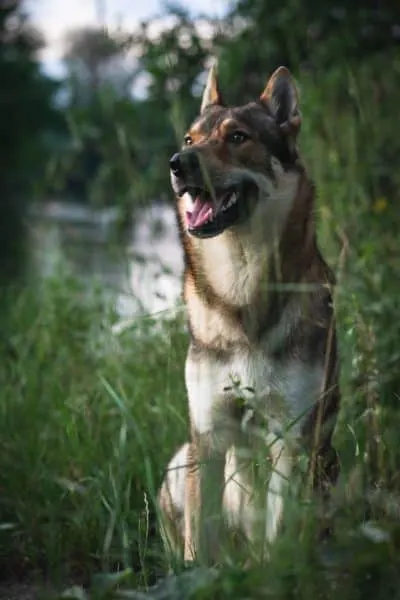
Shepsky Real-Life Examples
The “typical” Shepsky in appearance and temperament. Here is a dog who is receiving professional training for pulling on a leash, lack of focus, and excitability.
Note how it’s more compact than a German Shepherd, with black and tan coloration and dramatic markings on the face.
You can also see how it carries its brushtail over its back, has a short double coat, and has endless amounts of energy!
A long-haired Shepsky illustrates how this dog is likely more trainable than a purebred Husky.
This dog is a kind of sable in color and carries its tail low like the Shepherd in the above example. It again shows striking facial markings.
However, it lacks the focus and dedication to work that you would typically see in a German Shepherd.

